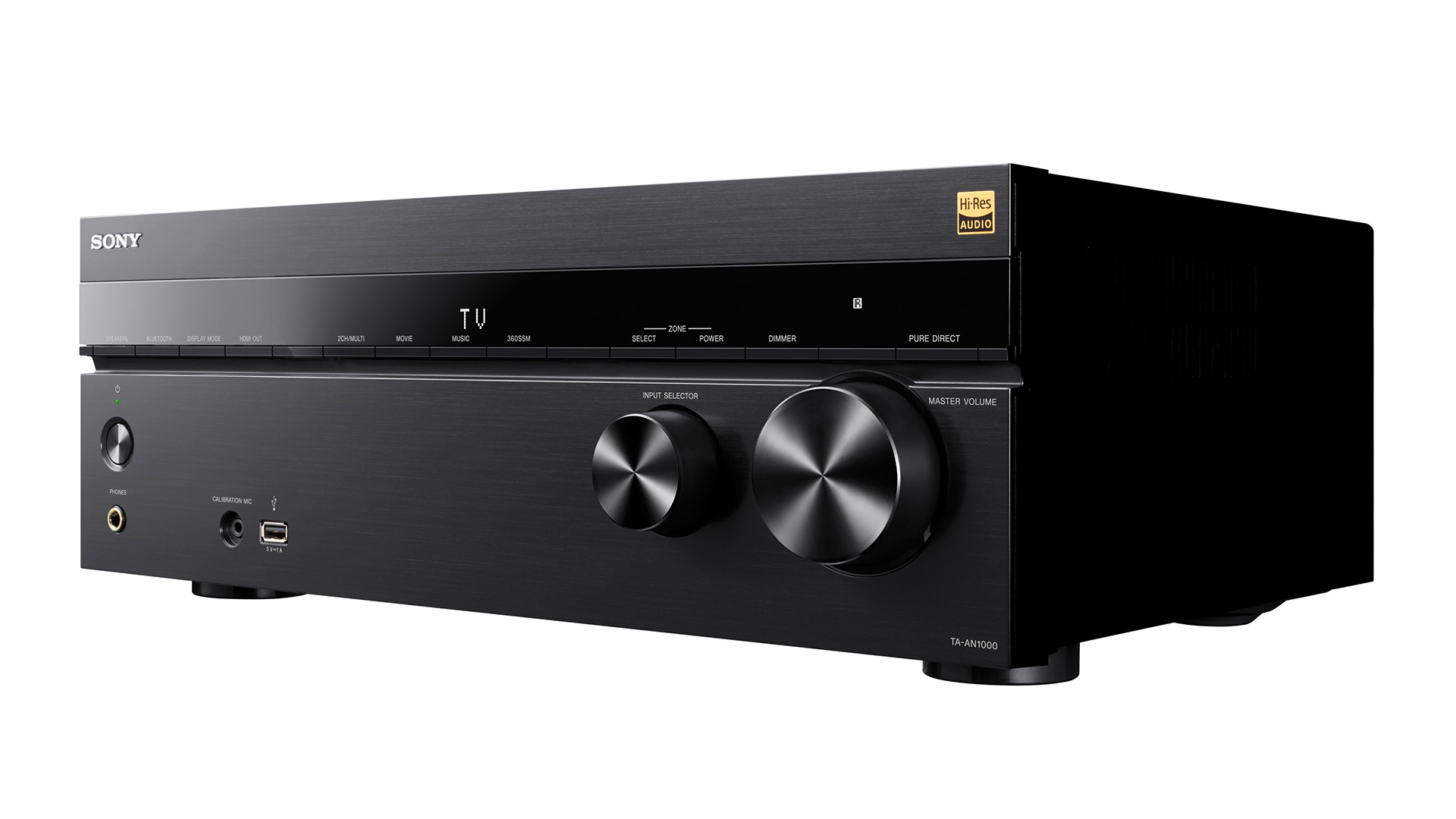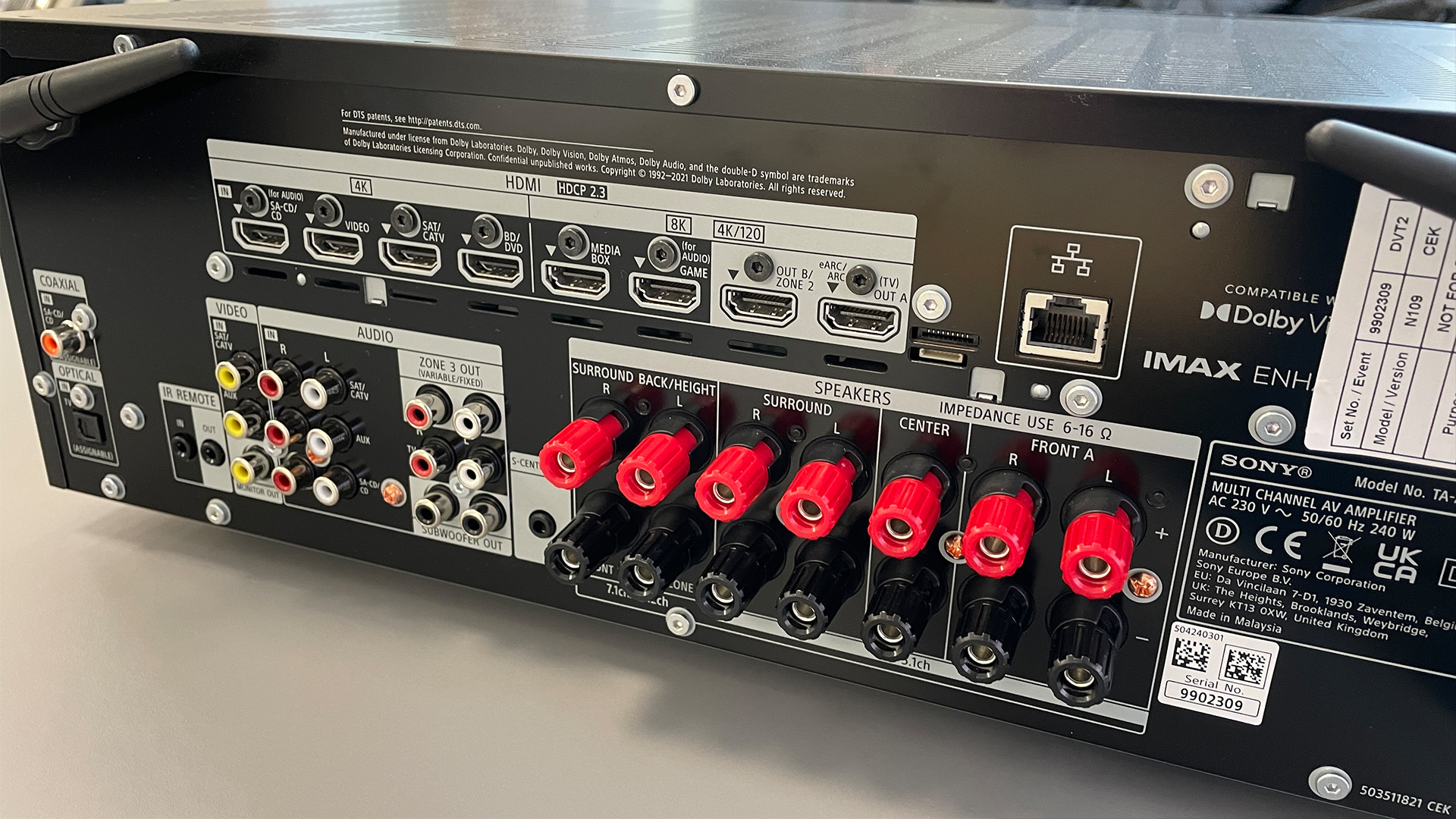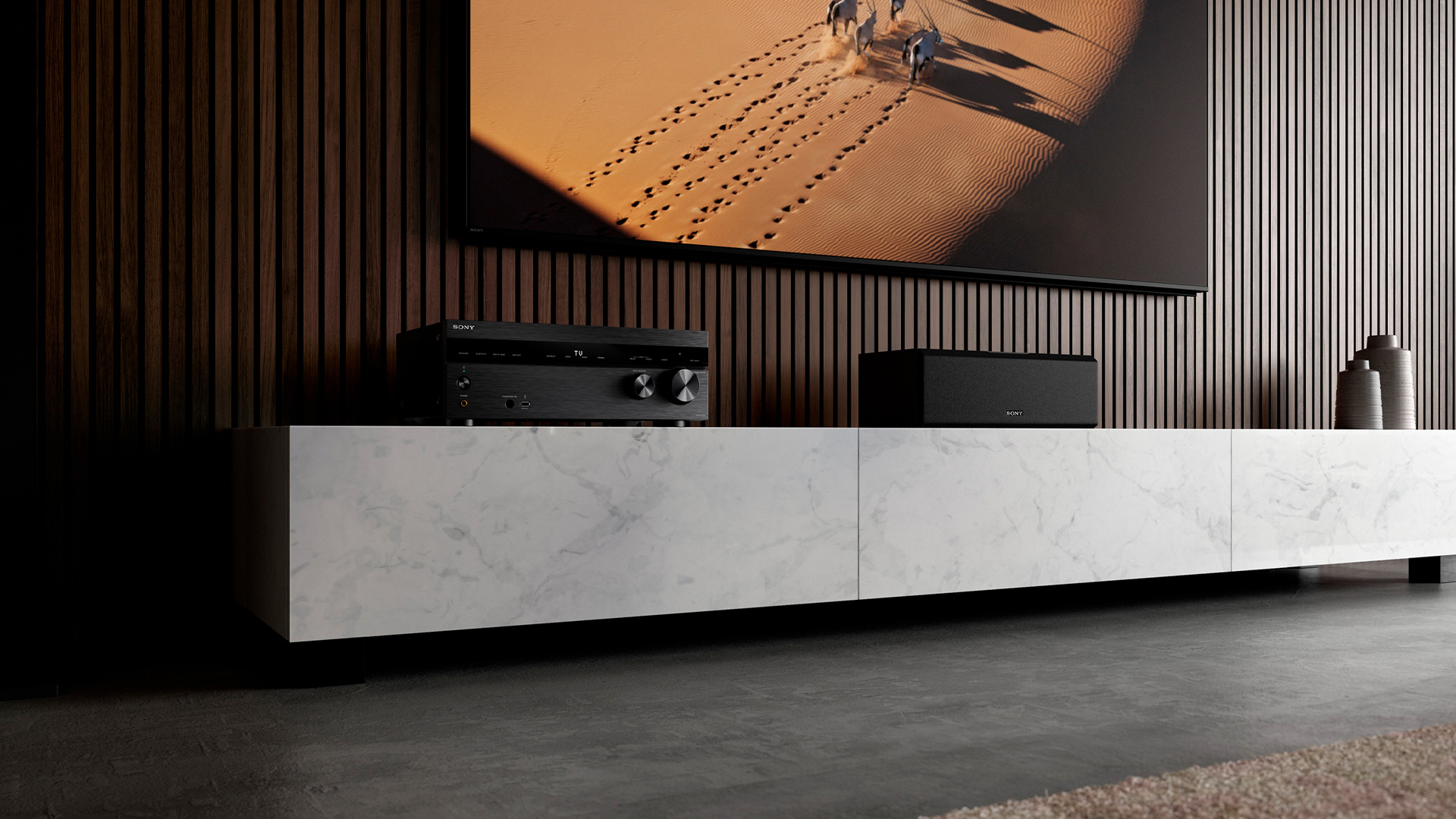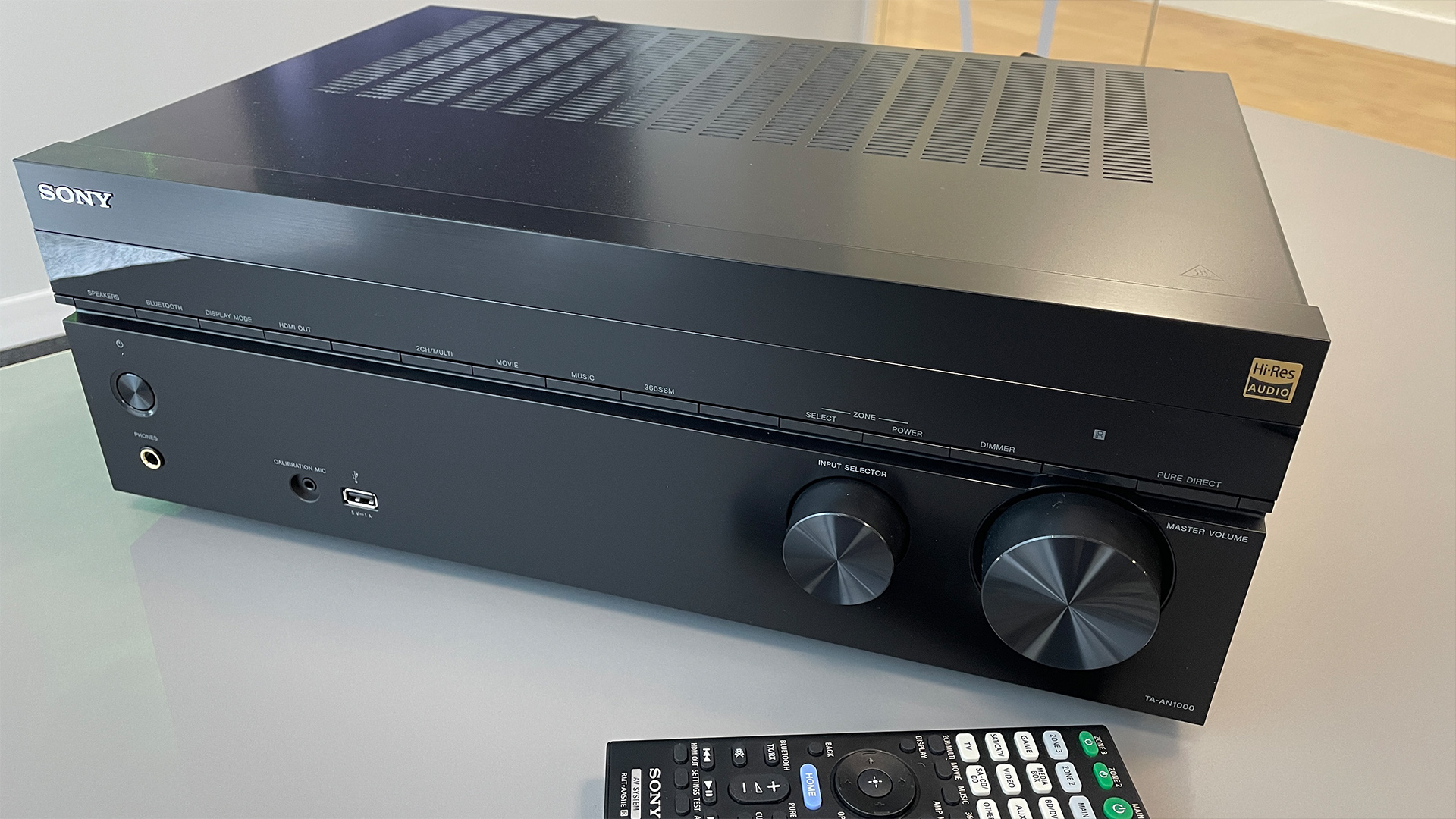What Hi-Fi? Verdict
Sony has delivered an AV amp that has reignited the same excitement that we felt with its last model, here with additional dynamics, scale and accuracy
Pros
- +
Spacious presentation
- +
Precise and detailed sound
- +
Impressive dynamics
Cons
- -
Some rivals are better equipped
- -
Set up is more involved than some
Why you can trust What Hi-Fi?
Sony is finally back in the AV amp game with the TA-AN1000 home cinema amplifier. It's been over five years since the Japanese tech giant graced us with its serial Award-winning STR-DN1080 AV receiver which took home Product of the Year in 2017 and 2018 (the year in which it also entered into our Hall of Fame), and it held a firm place on our Awards lists until 2020.
So surely a new AV amp from Sony is a cause for celebration? While this certainly is the case with the new TA-AN1000, we first find ourselves confronted with some awkward questions. Although it looks almost identical to the DN1080, why is it double the price?
Also, why does the US have an extensive AVR range consisting of five new models while the UK only gets this one model after we’ve waited so patiently for nearly six years? Finally, does the AN1000 live up to its lauded predecessor? While we can’t answer the first two questions, we can shed light on the third, and thankfully it's good news.
Price

The TA-AN1000 is a new European exclusive model which will retail for £999 in the UK when it officially goes on sale in June. At the time of writing, there does not seem to be any plan to make it available in the US and Australia.
However, there is the equivalent STR-AN1000 AV receiver for sale in the States which retails for around $900. While the STR-AN1000 shares a similar name and general price point with the TA-AN1000 model, we haven’t tested it and therefore can’t say for sure if the performance is exactly the same between these two models, but having discussed the differences with Sony, we suspect not.
The Sony slots neatly between its two closest competitors. Both are award-winners and both are made by the same company. There's the Denon AVC-X3800H which currently retails for £1200 / $1499 / AU$2999, and also the Denon AVR-X2800H which we originally tested at £869 / $1200 / AU$2399.
Build

The AN1000 looks almost identical to the STR-DN1080 bar some very slight changes to the rear panel. Releasing a new product that strongly echoes a six-year-old design may not sound like a good thing, but the new Sony still looks sleek and modern and feels well made.
The latest hi-fi, home cinema and tech news, reviews, buying advice and deals, direct to your inbox.
The few changes from the DN1080 include buttons for the Display Mode, HDMI Out and toggling 360 Spatial Sound Mapping mode on and off, as well as clearer labelling as to which HDMI ports support 4K, 4K/120Hz and 8K. The biggest difference between the two models, however, is that the DN1080 is an AV receiver while the AN1000 is an AV amplifier. This just means that you won’t find an antenna for radio signals on the latest model.
The AN1000 is accompanied by a redesigned remote which is much smaller this time around. It’s practically the same dimensions as the remote included with the Sony A80K, the TV we paired with this AV amp for testing; a nice touch of synergy for Sony’s home cinema ecosystem. It includes shortcuts to switch between HDMI sources, quickly access settings and change soundfields, offering mostly the same functionality as the previous remote in a smaller package.
Features

Sony has packed in the features when it comes to the AN1000. Beginning with the mostly simple and straightforward set-up process, a fair chunk of this is done via a microphone-assisted automated system. However, the amp also requests that you take a number of measurements yourself to aid the calibration.
This includes the distance between your listening position to the TV, the height of the room and the height of your TV from the ground. It’s one of the more involved processes required to set up an AV amp, but these measurements only have to be done once. Measurements apart, the Sony calibration system is blisteringly quick, only requiring us to adjust the microphone position once, unlike the Denon AVC-X3800H which requires you to reposition the microphone eight times to optimise results.

HDMI inputs x 6
HDMI outputs x 2
ARC/eARC eARC
HDMI 2.1 features VRR and ALLM on all ports, 4K120Hz/8K60Hz on two inputs and two outputs
Amplification 7 channels
HDR formats HDR10, HLG, Dolby Vision
Audio formats Dolby Atmos, Atmos Height Virtualization, DTS:X, Sony 360 Reality Audio
Streaming AirPlay 2, Spotify, Chromecast Built In, Works with Sonos, Bluetooth
Voice assistants Google Assistant
Moving onto compatibility, the TA-AN1000 includes seven channels of power amplification which can either be configured up to a 7.1 set-up or a 5.1.2 Dolby Atmos. The Sony outputs a claimed 85W of power per channel with all channels driven. The rival Denon AVC-X3800H has a broadly similar power output, although it features an additional two channels of power amplification.
The AN1000 is also decently equipped in the HDMI department, with two HDMI outputs with eARC and six HDMI inputs. All of these are claimed to be HDMI 2.1 ports, but that's mostly because any HDMI socket can be labelled as 2.1, even if it can't handle the features that most people would associate with the 2.1 specification. In the case of this Sony, all of the HDMIs can handle VRR and ALLM, but only two of the inputs (and both of the outputs) are compatible with 4K/120Hz and 8K/60Hz signals. Its Denon rival features six HDMI 2.1s that can all carry 4K/120Hz signals.
As expected the Sony has good HDR compatibility, with HDR10, HLG and Dolby Vision formats with further support for IMAX Enhanced. Audio format support is also excellent with Dolby Atmos, DTS:X and Sony 360 Audio, with its phantom speaker system creating simulated height channels and surrounds.
Wireless connectivity with this amp is also a standout feature, as it supports a plethora of connectivity standards. This includes Bluetooth, Spotify Connect, Chromecast, AirPlay 2 and even Works with Sonos - allowing you to hook up this AV amp to your own multiroom Sonos setup.
It's worth mentioning here that you can connect specific wireless Sony home cinema speakers, namely the SA-RS35 or SA-RS5 and up to two SA-SW5 or SA-SW3 subwoofers (they must be the same model) to create a rather neat home cinema sound set-up. We haven’t had a chance to hear such a package yet, so can’t comment on how well it performs.
Sound

There are no two ways about it, this amp is seriously talented in all the key areas we look for when testing a home cinema amplifier. It shares some of the overarching characteristics of the DN1080 but features a more powerful and dynamic performance that continues to impress the more we listen to it. We’re using our reference PMC speaker system here, mostly in a 7.1 configuration, although we did also swap out the rear surround speakers in favour of two KEF Dolby Atmos toppers creating a 5.1.2 arrangement during our testing.
Starting with the Dolby Atmos equipped 4K Blu-ray disc of Drive, we are introduced to the strengths of this home cinema amp during the opening scenes of the movie. The precision and clarity of the AN1000 immediately strike us, with The Driver’s voice sounding crisp and accurate to his position on the screen. There is also an enhanced sense of emotion and texture in his voice that helps to highlight Ryan Gosling’s performance, picking up on subtle tonal variation in his delivery.
In the ensuing car chase, we are treated to an impressive show of dynamics, with the car engine roaring as The Driver accelerates away from the police. That being said, it doesn’t sacrifice the more intricate details, such as the rumble of the tyres on the road or the hissing inflection of the police officers’ voices through the radio. As a helicopter soars overhead, we get a beautiful display of scale and immersion as the sound travels overhead and towards the rear surround speakers in an impressively smooth motion.
Moving on to The Batman, here we find another example of dynamics at work, accompanied by an equally thrilling car chase. As the Batmobile’s snarling engine revs up, we find ourselves shaken by the excellent bass performance, thanks to its powerful yet controlled approach. Bass feels taut and snappy, adding to the already punchy dynamics with a gleefully guttural low-end response. What is particularly striking is the directionality of the sound, which shifts with the cars on screen as they make sharp turns and weave through traffic.
As the car chase comes to an end and The Penguin’s Maserati hits the asphalt after several theatrical barrel-rolls through the air, we are once again met with the stunning balance of both loud and quiet dynamics. The metallic crunch of the car crash punches us right in the gut thanks to the responsive dynamics, with the twinkling chimes of broken glass piercing through, culminating in an impressively cohesive show.

Next, we have the sci-fi epic Interstellar (also on 4K Blu-ray), which highlights the TA-AN1000’s wide and spacious soundfield. Here we explore the 360 Spatial Sound Mapping feature, Sony’s 3D audio processing that creates a bubble of sound around and above you without the need for additional speakers. It certainly creates a much more expansive soundfield with enhanced verticality, although as a result it does sacrifice some precision in the focus of voices and other sounds. During the scene in which Cooper attempts to dock with the out-of-control Endurance space station, we do hear the benefits of 360 Spatial Sound mapping as the drama is intensified.
However, we can see the benefit of switching off the Spatial Sound Mapping during the quieter moments between Matthew McConaughey’s Cooper and Anne Hathaway’s Brand as the AN1000 sounds more articulate and clearer this way. The pair have a heated conversation in the space shuttle as they realise their waterlogged ship has left them stranded on the oceanic planet. This scene is bursting with volatile emotion, as McConaughey raises his voice, but it's Brand’s strained whispers as she realises that the pair will have lost decades of time on Earth that the Sony really manages to capitalise on, once again thanks in part to its excellent dynamics.
It's the moments when the impeccable Interstellar soundtrack builds that the Sony kicks into overdrive, delivering one of our favourite cinematic scores of all time with all of the tension and drama that it deserves. The track Coward, which plays as Matt Damon’s Mann betrays the protagonists, builds in a nail-biting and exhilarating fashion, as the swelling mass of instrumentation perpetuates our anxiety. This mixed with the snappy timing of the ticking drums in the background and gorgeously textured strings and organ sections all culminate in a goosebump-inducing performance. When the track shifts into high gear we are left nearly speechless as the Sony masterfully handles all of the competing aspects of the track at immense speed, with care and attention given to this frantic excerpt of music, alongside the movie's ongoing dialogue and effects.

This is where we can clearly hear the advantages over the Denon AVC-X3800H. While the Denon provides a smoother and richer presentation, it doesn’t quite pick up on the subtleties in the same way that the Sony does. The AN1000 feels more emotive and refuses to smooth over any aspects of the sound, whereas the Denon appears to round off higher frequency bite and doesn’t get close to delivering a similar amount of excitement and energy. That being said, the Denon is still a good choice for those who prefer a smoother, more easy-going listening experience.
Taking a quick trip to Queen’s Live Aid concert in Bohemian Rhapsody (here in a 5.1.2 Dolby Atmos configuration), our thoughts are confirmed, as the roaring crowd feels spacious and enveloping, while Queen’s iconic discography bursts to life with snappy timing and energy that has us subconsciously tapping along. Freddie Mercury’s vocals are as warm, raspy and textured as we’d expect, but the Sony does a great job of adding a natural touch that makes us feel like we’re amongst the audience.
We round things off with a quick test of music on Tidal via the amp’s Bluetooth connection. Listening to Nights by Frank Ocean in Pure Direct stereo, we hear a lot of characteristics from our movie testing, including crystal clear vocals, tight and snappy timing, and an authentic-sounding approach to instrumentation.
Verdict

Sony has caught lightning in a bottle once again, with the TA-AN1000 sparking the same magic as STR-DN1080 but at a higher price point. Its crisp, precise and punchy sound strikes a nearly perfect balance, and it elevates every movie and song we throw at it. This amplifier ticks all our boxes, with a sleek design, good feature set and outstanding performance, making it so easy to recommend. If you’re looking at buying an amp at this level, then the Sony TA-AN1000 is a no-brainer.
Review published: 2023. Review updated: November 2024.
SCORES
- Sound 5
- Features 5
- Build 5
MORE:
Read our Denon AVC-X3800H review
And our Denon AVR-X2800H review
Here's our pick of the best AV receivers we've tested
How to set up your AV receiver and get the best sound
What Hi-Fi?, founded in 1976, is the world's leading independent guide to buying and owning hi-fi and home entertainment products. Our comprehensive tests help you buy the very best for your money, with our advice sections giving you step-by-step information on how to get even more from your music and movies. Everything is tested by our dedicated team of in-house reviewers in our custom-built test rooms in London, Reading and Bath. Our coveted five-star rating and Awards are recognised all over the world as the ultimate seal of approval, so you can buy with absolute confidence.



